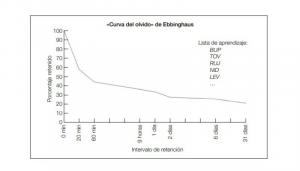How to enhance the appearance of insights?
One of the most impactful experiences for anyone who spends part of their time solving problems, whether on a personal or professional level, is that of insight, also called the "eureka moment", for being the expression Archimedes used when he discovered his famous principle.
This psychological phenomenon occurs when we suddenly and unexpectedly find the long-sought solution to a challenge. It usually happens at a time when you are not working on that search, or at least not consciously. Its appearance is usually accompanied by intense mental activation, and even euphoria, as well as a pleasant and relaxing physical sensation. In addition, the solutions found are usually of high quality, which further reinforces the sensations already described.
However, this much desired phenomenon cannot be generated at will, something that would otherwise be very useful on a day-to-day basis. Insights arise or do not arise, and you never know when, or even if it will finally emerge. Yes we can instead block it voluntarily; just look for it actively so that it never happens. So how can we harness it to solve our challenges?
- Related article: "Insight: what is it and what are its phases"
The paradox of cognitive block
The paradox in the functioning of insight, the fact that trying to reach it directly leads us to be cognitively blocked, has a lot to do with how our brain processes information. Basically, and to use a simple analogy, it is like a computer; We can use it in a linear way, that is, using one application at a time and then another, or we can open many simultaneous applications and all of them work simultaneously.
If we talk about the brain, we can use it to think logically about an issue that in turn leads us to another related idea and so on, until find the solution to the problem we are trying to solve, or we can use it in parallel, where all the problems we are trying to solve are addressed at once, Y combinations are explored that, a priori, would not make any sense.
As with a computer, if we open a very complex application that consumes many resources, those that are available for the rest of the applications are reduced; the system slows down, and sometimes even hangs. But if we work with many light applications, all of them will be able to work in parallel to achieve their own objectives.
Conscious and logical thinking consumes many resources, which implies that the rest of the processes are left without them. On the other hand, if we release all those resources that logic and consciousness consume, they remain available for the rest of mental processes and, curiously, all of them begin to work in parallel.
- You may be interested: "Cognitive processes: what exactly are they and why do they matter in psychology?
How to promote the appearance of insight?
When we are children, we all come from the factory with the ability to work innately in parallel mode (those blank moments staring beyond the blackboard) but, in his attempt to develop our ability to concentrate and think linear, the educational process tends to reinforce the latter to the detriment of the parallel mode, which is frowned upon (being in the dark), thus generating habits that later we are no longer able to deactivate.
In this way, most of the time our brain works in a linear way, using a large amount of resources and limiting the options and possibilities that we should explore to find original solutions to the challenges that we face.
That said, the key to empowering insights and maximizing the chances of it happening is in re-learn how to re-enter that "forgotten" mode of parallel thinking.
To help us in this task, techniques such as contemplation (commonly "getting soaked") or meditation are very useful tools, because they help us to re-educate the way in which we shift the focus of our conscious attention and how we open or close the breadth of that focus more effectively.
However, like any biological process, the continued practice of these techniques gradually enhances their effectiveness, eventually time to be able to modulate to voluntarily the moment and the depth in which we enter this form of processing in parallel.
Behind this simple explanation, however, there are a large number of neural mechanisms that in the are currently being investigated very intensively in research centers around the world. world. Knowing them is an exciting process that also brings many benefits both in the personal and professional fields.
Bibliographic references:
- Hill, G.; Kemp, S. M. (2016). Uh-oh! What Have We Missed? A Qualitative Investigation into Everyday Insight Experience. The Journal of Creative Behavior. 52 (3): 201 - 211.


